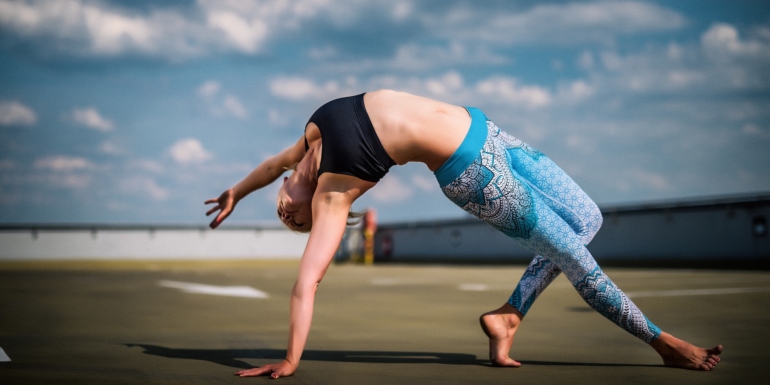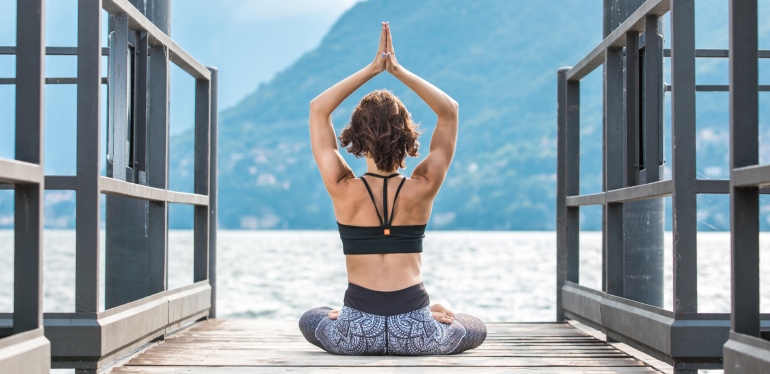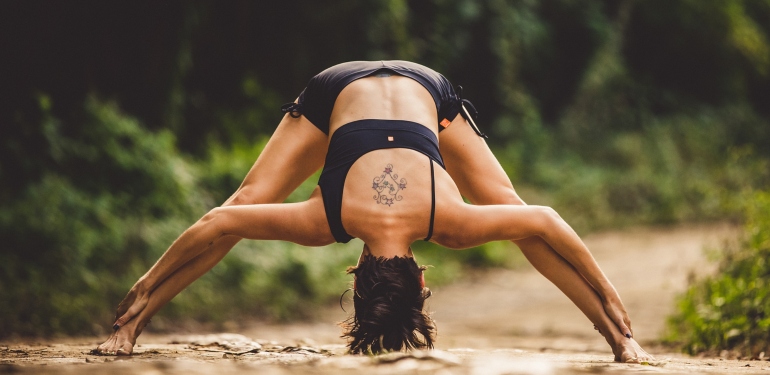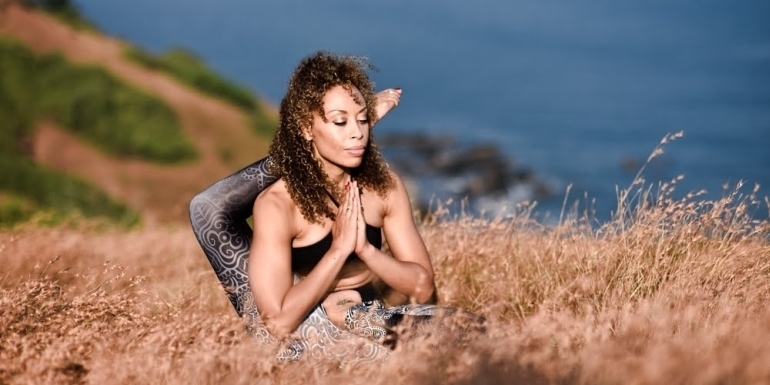Quite a few of our clients practise yoga everyday. For most of us – including me! – that kind of regularity is still mission impossible but it’s always worth giving it your best and trying. Some of you practise yoga only in the studio where you can count on your teacher's assistance & attention. Others would rather join recurrent yoga workshops or stick with your daily yoga routine at home. It often happens that yoga only supplements “main” training – such as running, climbing or weight lifting. On the other hand, I am confident that among our clients there are also women who have never participated in sun salutation – which is perfectly fine! Maybe yoga is not your thing but maybe you just don’t know where to start?
That’s why I have prepared a short guide on the most popular yoga types. It can help you to make up your mind and give yoga class a shot, or perhaps discover a new, more suitable type of practise. Let’s go!

Dynamic Yoga
Vinyasa aka Power Yoga
The key characteristic of this style is its smooth switching from one position into the other, which makes the whole routine more dynamic. That’s where the difficulty is hidden. What matters the most, alongside the technique, is the flow of movement and breathing. Vinyasa yoga puts a lot of focus on harmonizing the movement with breathing, which could be challenging for beginners. Vinyasa is a fantastic style for the creative ones – there’s no fixed sequence of asanas but there’s a lot of room for imagination and creativity.
Ashtanga
This type of yoga helps to find the beauty in… the routine. Ashtanga consists of specific sequences of figures that are always carried out in the same order. During practise it’s important to focus your attention on your breathing and your sight – on fixed points (known as drishti). Concentrating your mind on the flow and synchronizing your breathing with movement helps to free up your mind from stress, tiredness and everyday hustle. The stability of Ashtanga allows you to find a sense of solace in a world that continues to change everyday. This style can be described as demanding, however most of the asanas could be adjusted to the mobility and skills of a yogi. Although Asthanga imposes hard discipline – it is recommended that you practise it six times a week.

Static Yoga
Iyengar
Is a style that values precision over vanity. All the attention is focused on the precision of the figure, which is why each asana is held for longer than just a few breathes, like in Vinyasa. While practising Iyengar it is common to support yourself with blocks, rollers, stripes, and even chairs. This type of yoga is great for beginners – it teaches them how to correctly enter a specific position, which muscles should be engaged, and which ones should be rested. Once you master the technique of the essential positions, it is much easier to challenge yourself with Asthanga.
Yin
The primary goal of this activity is to relax your body and mind. Yin Yoga is calmer and slower than Iyengar (mentioned above) – each position is held for up to a few minutes. This style develops patience, mindfullness, helps to calm down your mind, and quiten yourself. Due to its static nature, Yin practise is considered challenging for people working in a stressful environment, when used at a quick pace. Sounds like you? Yin will help you to find the correct balance but you may face some difficulties with concentration when starting out.
Kundalini
This yoga type is considered the most spiritual one, which focuses on working with your breath, mantra, correct hand arrangement (mundra) and meditation. The main goal of the practise is to awaken the Kundalini energy (located in the base of the spine) and to help achieve a higher state of mind. Due to its calm form, Kundalini will be possible for a person in every stage of the advancement process. More experienced yogis can treat it as a supplement of more dynamic trainings (such as Vinyasa) and beginners – as a soft introduction to the yoga culture.

Hot Yoga
Hot Vinyasa
The most important feature of this type of yoga is… the temperature of the room where you practise! Hot Vinyasa classes are run in a room preheated to almost 38 degrees celsius . There are a few variations of the levels of heat, but the most popular are the temperatures ranging from 32-35 degrees. Training in these conditions aims to help you get rid of toxins, and cleanse your body and mind. High temperatures have a positive impact on muscle flexibility – so it’s easier to perform some asanas – and it helps to avoid injury. Prior to the practise it is recommended that you drink at least a liter and a half of water, to prevent dehydration. A lot of schools require you to bring your own yoga mat or – at least – a towel that’s big enough to cover the mat. A popular outfit consists of shorts and a small crop top – after two minutes in a hot room you will stop wondering why! Hot Vinyasa is not as advanced as regular Vinyasa, it also qualifies as an activity for beginners (if they are able to handle the heat). If you often feel light-headed during the hot, summer days do not join the “hottest” class – start by training in 25 degrees and focus on what your body is telling you..
Bikram Joga
Is a characteristic type of hot yoga, created and popularized by Bikram Choudchury. In order to live up to the“Bikram” name, it needs to follow a set of specific rules in reference to the practise. The temperature in the room needs to be the equivalent of 37.8 degrees. The author of Bikram Yoga declares that practising in that specific temperature has a positive influence on the immunity system, it elasticizes the backbone (bye bye back pain!), strengthens the bones and tones the muscles. A class lasts 90 minutes and consists of a sequence of 26 positions, carried out in a given order. This routine is completed twice, followed by two breathing exercises to finish. Bikram himself is quite a controversial character in the yoga community – he made a fortune by promoting yoga in the USA and his current lifestyle is far from the simplicity and balance which are considered to be the foundations of yoga.
What about Hatha yoga?
Hatha is a general term of yoga practise so it can refer to both static and dynamic forms. It’s also the name of one of the oldest practises that combines work with the body (asanas) and breathing exercises (pranayama). When a yoga studio describes it’s classes as “hatha” you can expect moderate difficulty.
I know it’s quite a lot to digest, but take it easy – you don’t need to try it all to find out which option suits you best. You probably already have the answer in your head – now’s the time to verify it in practise! Namaste!










Leave a Reply Cancel Reply